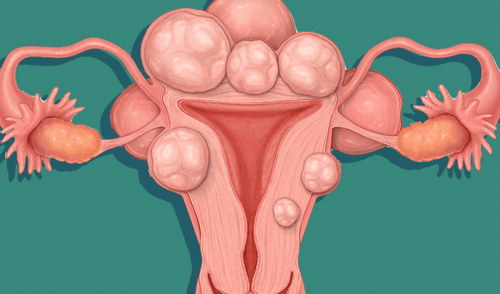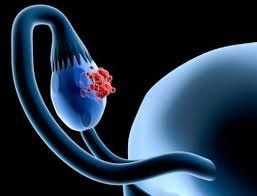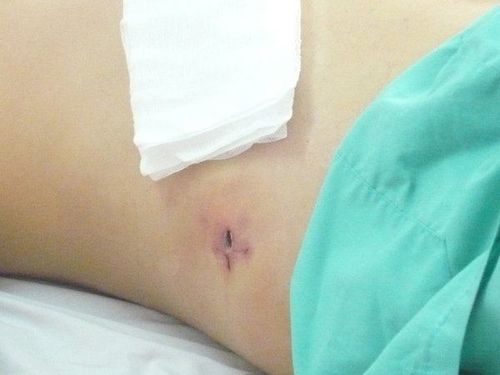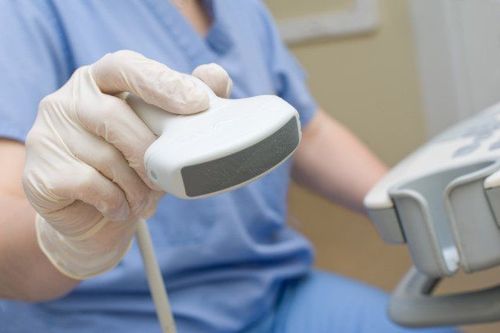This is an automatically translated article.
The article is professionally consulted by Master, Doctor Trinh Van Dong - Radiologist - Department of Diagnostic Imaging - Vinmec Ha Long International Hospital. Master, Doctor Trinh Van Dong has nearly 10 years of experience in the field of Diagnostic Imaging, especially has strengths in performing techniques: X-ray, ultrasound, computed tomography, magnetic resonance.High-intensity focused ultrasound is a non-invasive technique that treats cancer by increasing the local temperature at the tumor. Currently, focused ultrasound has been widely used around the world, bringing optimal efficiency to patients.
1. What is focused ultrasound?
High-intensity focused ultrasound (HIFU) or magnetic resonance-guided focused ultrasound (MRI) is an innovative, non-invasive treatment for many patients. types of tumors and diseases.Focused ultrasound is the use of ultrasound transducers, similar to those used for diagnostic imaging, with much higher energy. The transducer focuses sound waves to generate heat at a single point in the body and destroy target tissue. This process is repeated as many times as necessary until the target tissue is destroyed. MRI images are used to plan treatment and monitor heat levels in real time.
This is an innovative ultrasound treatment modality, although it causes hyperthermia, this technique does not increase the temperature very quickly, only to a level below the therapeutic temperature < 45 degrees Celsius. Clinically applied mainly in the treatment of cancer.
Mechanism of HIFU therapy, the ultrasound beam is focused on the diseased tissue, causing the temperature inside the tissue to rise from 65° to 85°C and destroy the diseased tissue by coagulation necrosis. This method allows precise processing of a portion of the target tissue that has been identified. The entire target tissue is treated by moving the applicator on its robotic arm to shoot side-by-side according to the doctor's design. In addition, focused ultrasound can be combined with radiotherapy or chemotherapy.

2. Treatment application
Focused ultrasound is used to treat some of the following diseases:
Uterine fibroids: This therapy is used effectively for patients with uterine fibroids, allowing the entire fibroid to be removed. . Cancer treatment such as removal of solid tumors of bone, brain, breast, liver, pancreas, rectum, kidney, testicles, prostate, bladder, stomach,... At this time, cancer treatment is still is in the follow-up phase as more effectiveness needs to be learned. In addition, tumors in the extremities can be removed. Especially highly effective in cutting prostate cancer. Treatment is with a rectal probe and relies on heat because ultrasound waves are focused on the prostate to kill the tumor. HIFU can also be used to remove the entire prostate via a transrectal probe. Focused ultrasound helps to deliver targeted cancer drugs to achieve optimal drug effectiveness. The drug concentration in this way is obtained 10 times or more than traditional chemotherapy with less side effects because it is no longer available to the whole body. Treatment of atrial fibrillation: HIFU has been used to treat the most common heart rhythm disorder, atrial fibrillation (AF).
3. Advantages of focused ultrasound
High Intensity Focused Ultrasound HIFU is a promising medical technology with non-invasive characteristics and minimally invasive treatment. HIFU is a unique device capable of causing tissue necrosis at a high precise depth and with little effect on the surrounding structures. The patient does not have to undergo major surgery, causing no bleeding or pain for the patient. The application can treat both benign and malignant tumors. There is clear value in reducing pain symptoms in cancer patients, improving the quality of life for patients. Both small and large tumors can be treated. No harm to vital organs such as heart, liver, kidney... Few side effects: During the treatment, a few patients may have skin burns due to arbitrarily changing positions, and some Few patients have a low-grade fever after treatment, which does not cause the common side effects of cancer treatment with other methods.

4. Disadvantages of focused ultrasound
The risk of this procedure is that the tissue surrounding the treated area may be affected by the ultrasound waves. Another possible risk is that the lesion is not completely destroyed because the heat of the wave is not enough for complete destruction. HIFU is not suitable for use in some areas of the body because ultrasound has a negative effect on certain body areas such as lungs, mediastinum, esophagus. Because when ultrasound waves meet bone tissue, they will be reflected and absorbed, and tumors located behind the ribs cannot be treated. In the treatment of liver cancer because the treatment site is too close to the lungs, when the treatment can cause lung damage. In the treatment of hemangiomas, cysts. Due to the very low absorption of sound waves of the aqueous humor, the therapeutic purpose is not achieved. In cases where the cancer has metastasized, the treatment is of little value. Vinmec International General Hospital system uses the most modern generations of color ultrasound machines today in examining and treating patients. One of them is GE Healthcarecar's Logig E9 ultrasound machine with full options, HD resolution probes for clear images, accurate assessment of lesions. In addition, a team of experienced doctors and nurses will greatly assist in the diagnosis and early detection of abnormal signs of the body in order to provide timely treatment.
Please dial HOTLINE for more information or register for an appointment HERE. Download MyVinmec app to make appointments faster and to manage your bookings easily.
MORE
What is an ultrasound? Everything you need to know about ultrasound How is ultrasound used in women's health care? Things to know about 3D and 4D ultrasound to detect fetal malformations














